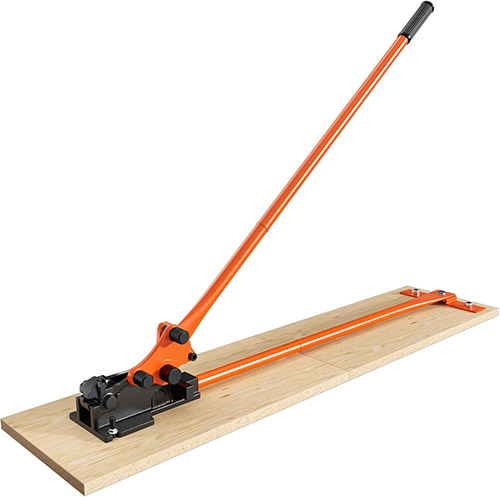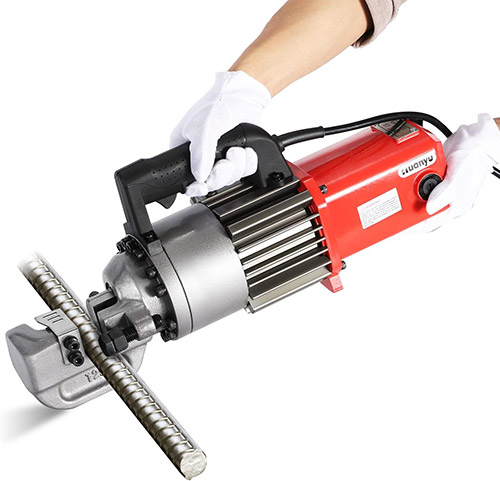Cutting rebar is essential for many construction projects. This guide provides comprehensive information on cutting rebar safely and effectively. We’ll cover various methods, tools, and safety precautions. Whether you’re a seasoned professional or a DIY enthusiast, this guide will help you achieve clean, precise cuts every time.
Safety First
Safety is paramount when cutting rebar. Always prioritise these precautions:
-
- Eye Protection: Wear safety goggles or a face shield. Steel Rebar cutting creates sparks and metal fragments. These can cause serious eye injuries.
- Hand Protection: Wear heavy-duty work gloves. These protect your hands from sharp edges and heat.
- Hearing Protection: Use earplugs or earmuffs. Cutting rebar produces loud noise. This can damage your hearing over time.
- Secure Work Area: Ensure the rebar is firmly clamped or secured. Movement during cutting can lead to accidents.
- Ventilation: Work in a well-ventilated area. Cutting generates dust and fumes. These can be harmful if inhaled.
- Fire Safety: Keep a fire extinguisher nearby, especially when using methods that generate sparks or heat. Clear the area of flammable materials.
For a more detailed look at site hazards, including how to guard cut ends against impalement, read our Ultimate Guide to Rebar Safety.
Types of Rebar Cutting Tools
Various tools can cut rebar, each suited to specific applications. Choosing the right tool depends on factors like rebar size, frequency of cutting, and budget.
Manual Cutting Tools
Manual rebar cutters are suitable for smaller projects or occasional use. They require physical effort but offer portability and quiet operation.
Bolt Cutters
Bolt cutters can cut smaller diameter rebar. However, they are not ideal for frequent use and require significant force. Not recommended for larger rebar sizes.
Manual Rebar Cutter
Specifically designed for rebar, manual rebar cutters provide leverage for cleaner and easier cuts compared to bolt cutters. Best for on-site adjustments or smaller projects where portability is essential.

The Bend-and-Snap Method: A Manual Alternative
The bend-and-snap method proves useful for situations that require minimal equipment. Start by notching the rebar at the intended point of the cut using a metal file or a hacksaw. Once the notch weakens the rebar’s structure, bend the metal back and forth at the notch. This process will concentrate stress on the notched area, eventually causing the rebar to snap where weakened. This technique is particularly effective for thinner or smaller grades of rebar and can be performed with basic tools.
Hacksaw
A hacksaw is a fine-toothed saw used for cutting metal. Effective for small diameter rebar or making minor adjustments. It’s slow but offers precision for fine work. Requires more physical effort than power tools.
Power Cutting Tools
Power tools offer faster and more efficient cutting, especially for larger projects or thicker rebar.
Angle Grinder
A versatile and widely used power tool. Abrasive discs cut rebar quickly but generate sparks and dust. Requires appropriate safety precautions. Provides good portability and manoeuvrability.
Circular Saw with a Diamond Blade
Offers clean, precise cuts when equipped with a diamond blade specifically designed for rebar. Not as manoeuvrable as an angle grinder. Requires a stable surface for cutting.
Reciprocating Saw
Useful in tight spaces, especially when a circular saw or angle grinder won’t fit. Metal cutting blades offer versatility, but cutting speed is slower than dedicated rebar cutting tools.
Chop Saw
Provides accurate and efficient cuts for various rebar sizes. A chop saw requires a stable platform and is best suited for stationary cutting applications.
Portable Rebar Cutter
Electrically powered cutters offer efficient cutting with less physical effort compared to manual cutters. Suitable for on-site use and higher volume cutting than manual options.
Hydraulic Rebar Cutting Machine
It offers powerful and precise cutting for larger diameter rebar. Due to its higher cost and specialised nature, it is often used in industrial settings or large-scale projects.

Cutting Rebar with a Torch
Oxy-Acetylene Torch
Oxy-acetylene torches can cut larger diameter rebar. This method requires specific safety precautions and training. Best suited for situations where other methods are impractical due to size or access restrictions.
Evolution of Diamond Blade Technologies
Diamond blades have revolutionized the rebar cutting process by providing cleaner and more refined cuts with a durability that withstands the rigours of slicing through metal. Their integration into circular saws and grinders allows for fast, efficient cutting operations, bridging the gap between speed and precision.
- Manual tools offer manoeuvrability for smaller projects.
- Electric and hydraulic solutions scale up cutting capabilities respectfully with their power source.
- Oxy-acetylene torches navigate complex cuts and bulky rebar with finesse.
- Diamond blade technology presents resilience and efficiency in a single package.
How to Cut Rebar
- Measure and Mark: Carefully measure the desired length of rebar and mark it clearly with a bright-coloured marker.
- Secure the Rebar: Place the rebar in a vice or clamp it securely to prevent movement during cutting.
- Put on Safety Gear: Wear safety goggles, gloves, ear protection, and long sleeves to protect yourself from debris and sparks.
- Position the Cutting Tool: Align your chosen cutting tool with the marked spot on the rebar.
- Make the Cut:
- For power tools: Lower the blade onto the rebar and apply steady pressure.
- For bolt cutters: Squeeze the handles firmly to cut through the rebar.
- For manual saws: Start with gentle strokes to create a groove, then apply more pressure for the main cut.
- Smooth the Cut: If necessary, use a file or grinder to smooth any sharp edges left after cutting.
Expert Tips for Clean Cuts
Achieving clean cuts in rebar enhances its integrity and minimises material wastage. To ensure precision and prevent bar fraying, seasoned professionals apply several proven techniques. One effective method is scoring the rebar lightly before making the full cut. This initial score guides the cutting blade, allowing for a more accurate and cleaner final cut.
Blade selection profoundly influences the quality of cuts. Opting for a blade that matches the hardness and diameter of the rebar being cut assures smoother cuts and extends the blade’s lifespan. Moreover, regular inspection and sharpening of cutting blades pre-empt deterioration in cut quality over time.
Tool maintenance cannot be overlooked when seeking clean cuts. Regular cleaning, proper lubrication, and necessary adjustments improve cutting performance and reduce the chances of generating jagged edges. Thus, adhering to the manufacturer’s maintenance guidelines enhances tool efficiency and prolongs its service life.
- Always measure and mark the rebar accurately before cutting to guarantee the cut is made at the correct location.
- For manual cutters, apply steady pressure along the cut to maintain a straight edge.
- Ensure power cutting tools are calibrated and have a stable footing to avoid tool slippage during operation.
- After completing the cut, inspect the rebar end. If burrs are present, remove them with a file to reduce the risk of injury and to make the installation process smoother.
Remember to secure the rebar tightly in a vice or with clamps, as movement during cutting can lead to imprecision and pose safety risks. If using power tools, verify that their rotational speed is suitable for the diameter of the rebar. This measure prevents overheating, which can in turn cause the rebar to lose its temper, compromising its structural qualities.
When precision is non-negotiable, a stationary chop saw or an abrasive saw fitted with a diamond blade often delivers the most consistent and clean cuts. The higher upfront cost of these blades is balanced out by their long-term performance and the superior quality of cuts they produce.
On-Site vs. Off-Site Cutting: Making the Right Choice
The decision between on-site and off-site rebar cutting hinges on multiple factors unique to each construction project. What follows outlines clear distinctions to guide you in choosing the most suitable approach, taking into account the specifics of your project.
Pros and Cons of On-Site Rebar Cutting
- On-site cutting allows for immediate adjustments, aligning perfectly with the ebb and flow of a dynamic construction environment where changes often occur at a moment’s notice.
- Direct oversight of the cutting process reduces the likelihood of errors in size or quantity, thereby eliminating potential delays or waste material.
- However, on-site work requires space for equipment and operations, not to mention the additional noise and safety concerns that workers must navigate.
Deploying on-site cutting tools demands strict adherence to safety protocols while providing the flexibility to respond to immediate real-time project demands.
Pros and Cons of Off-Site Rebar Cutting
- Off-site cutting boasts optimal conditions, leveraging controlled environments for precise, large-scale production efforts, unaffected by weather or on-site hazards.
- Bulk processing can present cost savings with streamlined, specialized workflows.
- Conversely, rebar delivered from an off-site location may face logistical hurdles, risking potential disruptions from delivery delays or incorrect specifications.
Facilities dedicated to off-site cutting ensure high-volume rebar processing with uniform output, though not without its challenges in exacting project specifications and timing.
Choosing the appropriate cutting location requires a careful evaluation of your project’s scale, complexity, and timeline. Large-scale projects might benefit from the high-volume capabilities of off-site cuts, while smaller, more flexible sites could find on-site cutting’s versatility more advantageous.
Consider the proximity of the cutting facility to your site. A nearby location could mitigate some of the risks associated with delivery delays. When precision and adaptability are paramount, the immediacy of on-site cutting could outweigh the efficiency gains of an off-site approach.
Still have questions about cutting steel rebar or need expert advice on your project? Don’t hesitate to contact the rebar specialists at Reozone. Our team is ready to assist you with all your rebar needs. We can provide tailored solutions and expert guidance to ensure your project’s success.
